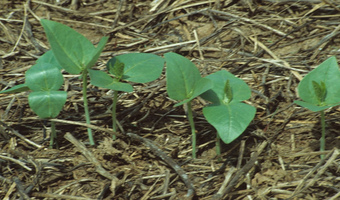 Depleted and tired soils have cost African farmers US$4 billion each year in lost productivity, with the region being a laggard in fertilizer use, but new farming techniques like planting soybean and cowpeas that naturally deposit important nutrients into the soil has assisted 1.7 million farmers in 13 countries rejuvenate 1.6 million hectares while tripling their yields.
Depleted and tired soils have cost African farmers US$4 billion each year in lost productivity, with the region being a laggard in fertilizer use, but new farming techniques like planting soybean and cowpeas that naturally deposit important nutrients into the soil has assisted 1.7 million farmers in 13 countries rejuvenate 1.6 million hectares while tripling their yields.
An analysis released by the Alliance for a Green Revolution in Africa AGRA shows that unsustainable farming practices, like a failure to rotate crops or apply mineral or organic fertilizers, along with persistent soil erosion, are depriving croplands across sub-Saharan Africa of 30 to 80 kilos per hectare of essential plant nutrients like phosphorous and nitrogen. The report warns that such losses threaten to “kill Africa’s hopes for a food-secure future.”
In East Africa farming practices have leeched the soil off nutrients without replenishing them, to the extent of halving many key crop yields while threatening the income and food security of over 85 per cent of East Africans.
The ripple effects are dire. East African poor soils for example have caused a 40 per cent drop in yield in the last one year alone. This has led to a 10 per cent increase in banana prices that has pushed customers to alternatives and left many of the country's 400,000 smallholder banana farmers with unsold crops.
The situation is further exacerbated by the fact that while farmers in many parts of the world regularly harvest up to five tons of produce like maize per hectare (about 2.5 acres), African farmers typically harvest one tonne. Overall, depleted soils cost African farmers US$4 billion each year in lost productivity.
The analysis from the Alliance for a Green Revolution in Africa (AGRA) focuses on intensive efforts initiated five years ago to move aggressively to support smallholder farmers in sub-Saharan Africa, where a lack of agriculture extension services and a scarcity of basic soil supplements have contributed to severely depressed yields for crucial staples like maize, banana and cassava.
“We’ve shown that it’s possible to work on a very large scale to help smallholder farmers adopt sustainable and profitable approaches to crop production, with the proof there for all to see in the form of significantly larger yields,” said Dr. Bashir Jama, director of AGRA’s Soil Health Program.
Simple farming techniques like mixing in organic matter such as crop residues and manure into the soil, applying small amounts of mineral fertilizers, and planting legume crops like cowpea, soybean and pigeon pea that can naturally deposit nitrogen into the soil has seen yields triple and soils healed.
The practice dubbed Intergrated Soil Fertility Management , ISFM, has seen Tanzania farmers more than doubledtheir maize yields, from 1.5 to 3.5 tons per hectare, while pigeon pea yields increased from 0.6 to 1.4 tons per hectare.
In Ghana, maize yields increased from 1.5 to 3.5 tons per hectare and soybean from 0.9 to 1.5 tons per hectare. The practice being championed by AGRA is informed by a 2009 study by scientists at Stanford University that warned that underuse of fertilizers by farmers in sub-Saharan was a major impediment to improving soil quality and increasing food production.
But with fertilizer prices in Sub Saharan countries having hit unprecedented highs, costing twice as much as they do in others countries, and experiencing intermittent supply, African farmers use on average about 10 kilos of fertilizers per hectare, while the global average is around 100.
AGRA is however seeking to correct this.Tthe organization’s efforts to help rural agrodealers stock more fertilizers have enabled smallholder farmers to acquire an additional 180,000 tons of fertilizer. If used as part of a broader soil management program, that’s enough fertilizer to help about 1.8 million farmers revive 3.5 million hectares of depleted land and triple the amount of cereals they produce. AGRA also is encouraging innovative approaches to fertilizer use by working, for example with various organizations to develop a new machine that applies fertilizer in “micro-doses,” adding just a few pellets for each seed.
“There is much more to soil health than fertilizers, but they are an essential ingredient for unleashing the potential of Africa’s smallholder farmers to create a uniquely African Green Revolution that delivers jobs and better incomes to rural communities and creates more sustainable approaches to farming,” Jama said.
















Comments powered by CComment